Bloomington city council balks for now at vacating some public right-of-way on former hospital site
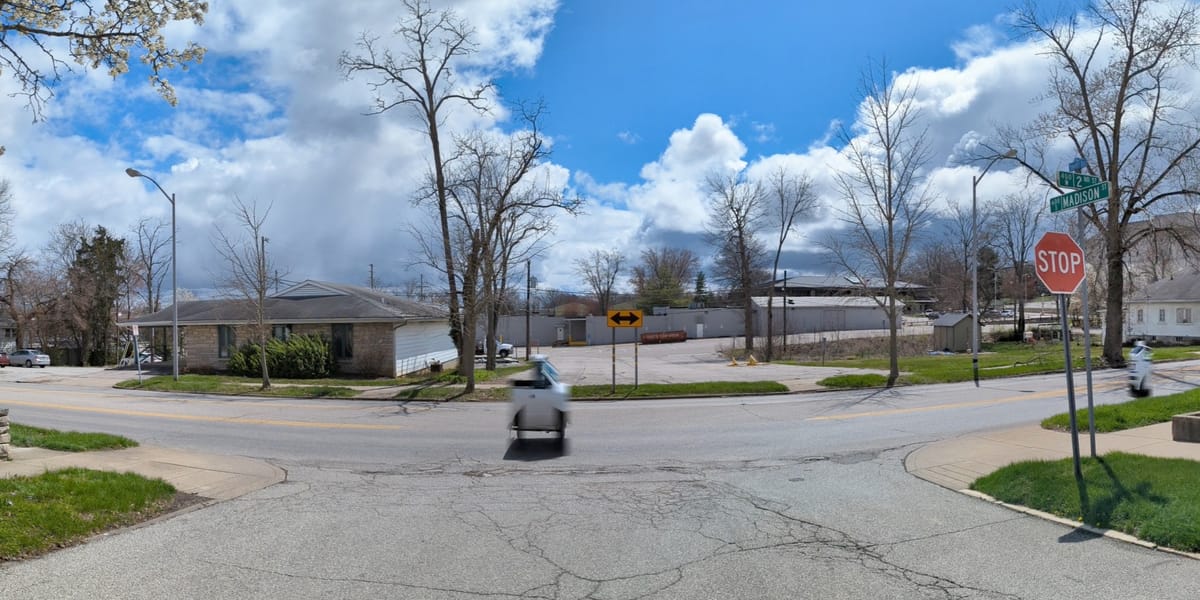
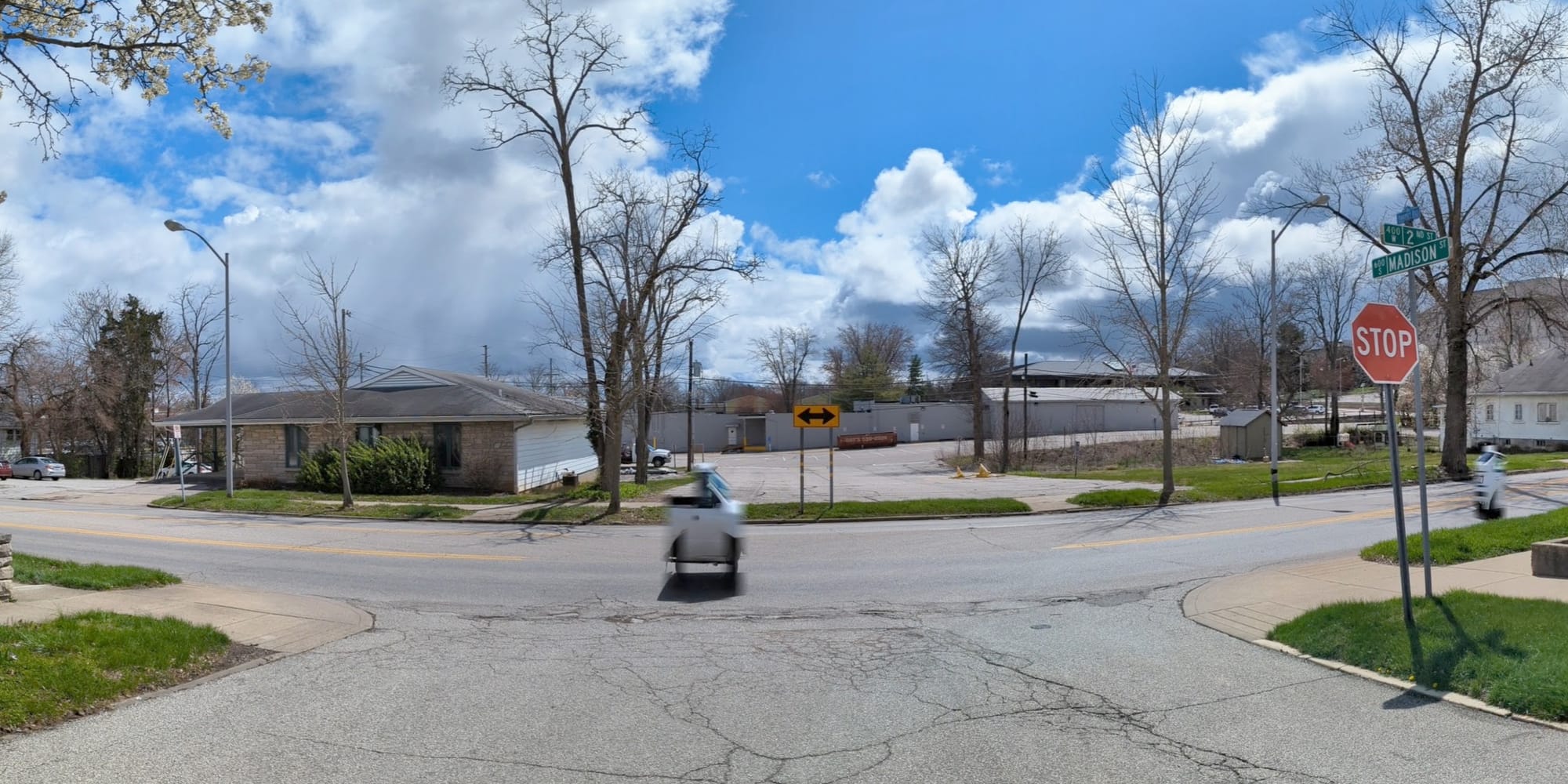
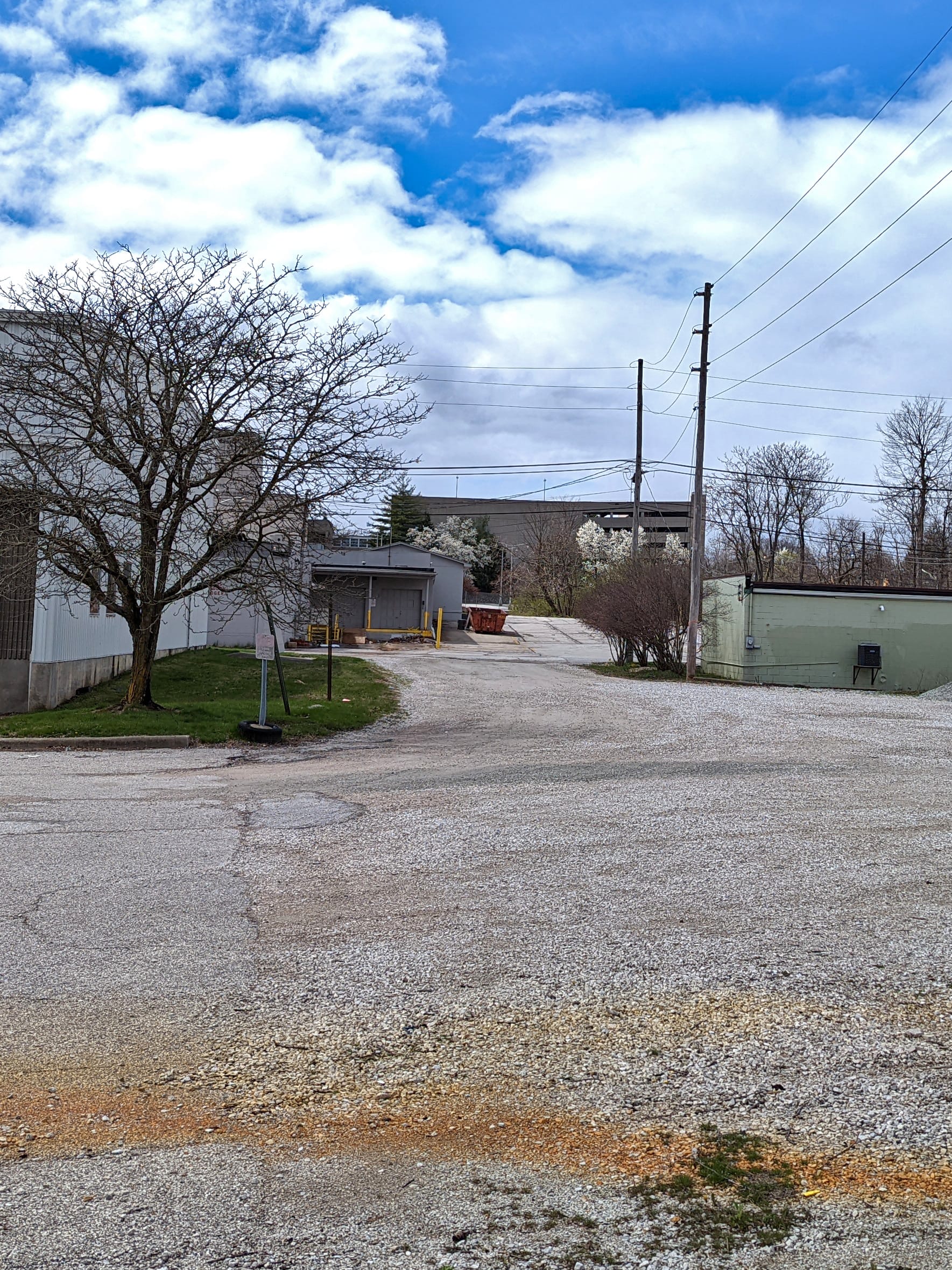
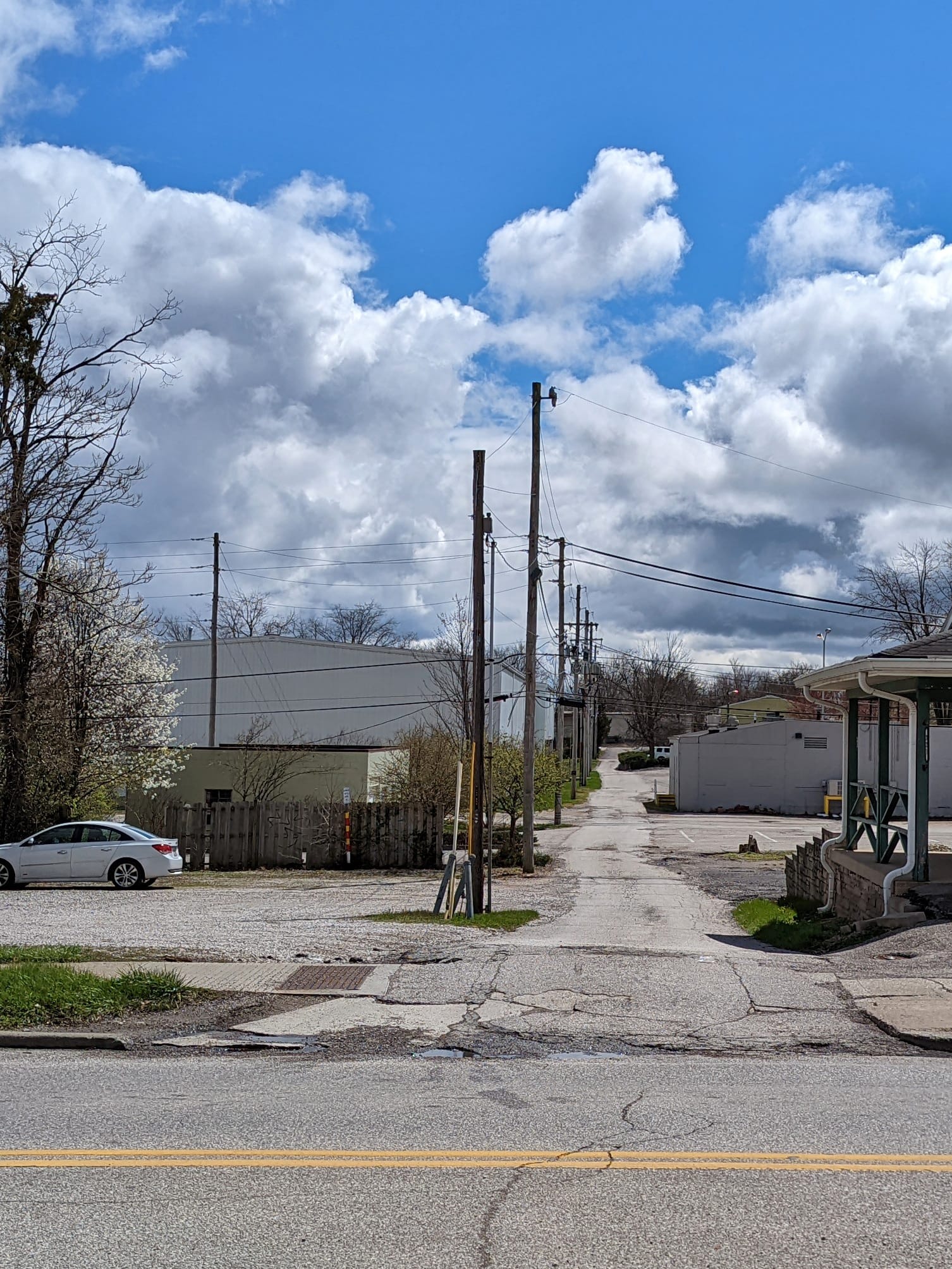
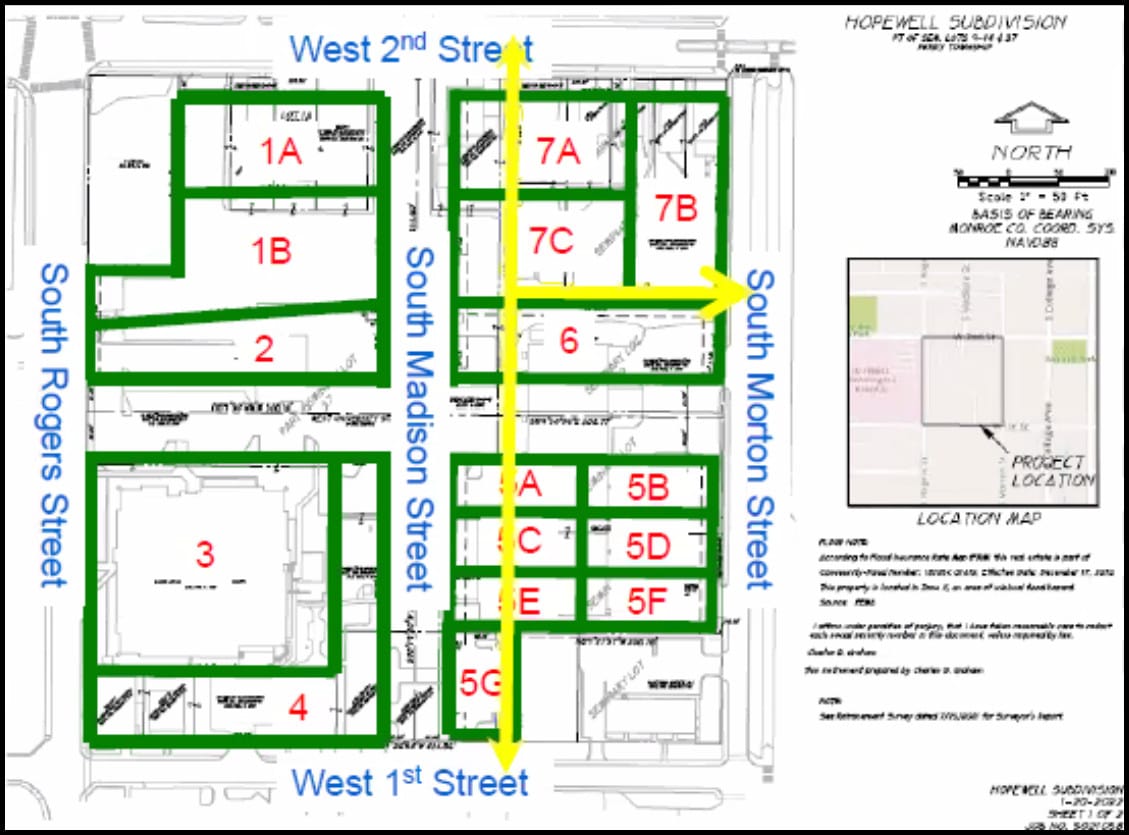

A request from Bloomington’s redevelopment commission (RDC) to vacate parts of two alleys in one of the blocks near the former site of the IU Health hospital was denied by Bloomington’s city council at its Wednesday meeting.
The vote was split 4–5, but not along familiar lines.
Voting to give up the right-of-way were: Isabel Piedmont-Smith, Sue Sgambelluri, Jim Sims, and Ron Smith. Voting against the vacation of the alleys were: Matt Flaherty, Dave Rollo, Kate Rosenbarger, Susan Sandberg, and Steve Volan.
The RDC’s request came in connection with the planned redevelopment of the site, which Bloomington is acquiring from the health provider in a $6.5 million real estate deal.
The plat showing the vacated alleys had already been approved by Bloomington’s plan commission in early February.
As part of the plat, Madison Street will be extended south to 1st Street, from its current intersection with 2nd Street. And a new “greenway street” called West University Street will be built between Rogers and Morton Streets. The block in question is bounded by Morton and Rogers streets on the east and west, and by 2nd and 1st streets on the north and south.
The alleys aren’t needed in those locations, given the construction of two new streets.
But councilmembers who voted against the alley vacation seemed to want some way to ensure that additional alleys could be platted, with the idea that the new alleys would help constrain the size of residential buildings to be constructed in the block.
Based on the discussion of the alley vacations at the council’s committee-of-the-whole meeting the week before, the denial of the alley vacations on Wednesday night was a little bit surprising.
At the committee meeting, Piedmont-Smith said that the vacation of the alleys was straightforward enough that it should not have even required consideration at a committee meeting. She said, “I’m not concerned about vacating these alleys. Furthermore, I actually think that this item could have been just sent directly to a second hearing, because it’s a pretty straightforward item.”
Absent at the committee-of-the-whole meeting were three of the five councilmembers who voted against the alley vacations: Matt Flaherty, Kate Rosenbarger, and Steve Volan.
What happens next?
Responding to an emailed question from The B Square, Bloomington director of economic and sustainable development Alex Crowley wrote, “Frankly, it’s a bit unclear what the next steps will need to be. Staff is evaluating several options for immediate next steps to address some of the councilmembers’ concerns and vote on Wednesday.”
Crowley added, “Because of the formality of the platting process and RDC’s future ownership of the site, any changes to the current plan will naturally involve public reviews…” The master plan for the redevelopment of the former hospital site was settled in early 2021 after a public engagement process.
Flaherty said at Wednesday’s meeting he was concerned that someone could buy several of the parcels in the plat and construct a building the size of Avenue on College, which was formerly called Smallwood. Flaherty said, “I think it should be multifamily here. But I think the form should not be monoliths.”
Rollo also expressed concerns about the potential for a monolithic facade that extends for an entire block.
It was similar to the sentiment that local architect Marc Cornett had expressed during public commentary at the council’s committee-of-the-whole meeting a week before: “If you vacate alleys, put them back in the correct locations.” Cornett added, “It’s really imperative to keep the dimensions of the individual parcels contained so that you end up with the historic patterns that we love of our community.”
Flaherty agreed that the alleys should be vacated, but he wanted to have some way to ensure that alleys would be added, and that the city council would have some mechanism to weigh in on it. He said, “I don’t want to vacate the alleys now, which requires council action, without a plan to add additional…a plan that we’ve weighed in on.”
Making the presentation to the council on the alley vacations was director of planning and transportation Scott Robinson. Among other things, Robinson pointed to the additional cost for adding alleys.
Flaherty responded, “I realize there’s a cost to that. I think it’s worth it. I think the infrastructure is worth it. I think it’s a 100-year-plus investment in the city, as the mayor sometimes reminds us.”
Volan also weighed in against large multi-family buildings for the block. He said, “I’m increasingly questioning the idea that the primary motive of this area should be half-block-long slabs of multifamily housing. I’m not so sure about that. I mean, I think there should be multifamily housing, no question. But why can’t there be alleys here?
A concern about the scale of development promoted by the platting was raised during the Bloomington plan commission’s early February meeting about the alley vacations. Bloomington resident Eoban Binder responded to the idea that the platted parcels would also provide flexibility for developers who want to purchase a smaller amount of land. But he expressed some skepticism: “I just kind of question though, how much that’s really going to happen.”
Binder wondered if it were more likely that one big developer would want to buy the whole block. Binder said if the aim is to encourage smaller neighborhood-scale development, the plat should include smaller lots to begin with.
At the early February plan commission meeting, Patrick Dierkes, who’s a project engineer with the city, responded to questions about the parcel sizes, by pointing to the zoning for the area. For the area of the plat there are two zoning districts—MM (mixed-use medium scale) and MN (mixed-use neighborhood scale). Zoning districts include minimum lot sizes.
The minimum lot size for MM and MN zoning districts is 5,000 square feet. The lots in the southeast corner of the plat are a bit larger than that. One is 0.156 acres or about 6,800 square feet. And several others are 0.174 acres, which is about 7,500 square feet.
It was in May 2021 when the city council approved the zoning for the area as a part of a new citywide zoning map. Only Rollo dissented on the citywide zoning map.
Plan commissioner Jillian Kinzie said at the early February meeting that she supports the encouragement provided by the plat for smaller-scale development. “If we can communicate that, and actually get some small scale development, that would be wonderful,” Kinzie said.




Comments ()